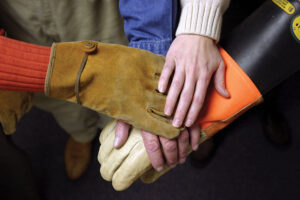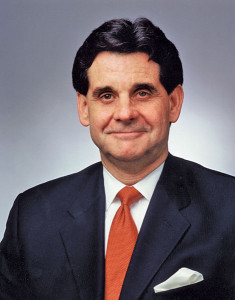 The last several years have seen erosion in the confidence Americans have in many of our institutions. According to Gallup’s annual “Confidence in Institutions” survey released in June, Americans are giving increasingly low marks to institutions such as public schools, big business, the media, banks and government. Out of 16 institutions tested only the military, small business and the police registered higher than 50 percent confidence levels. This year’s poll found record-low confidence in banks, television news and public schools, with scores ranging from 21 percent for banks to 29 percent for public schools. Congress ranked dead last, at a confidence level of just 13 percent.
The last several years have seen erosion in the confidence Americans have in many of our institutions. According to Gallup’s annual “Confidence in Institutions” survey released in June, Americans are giving increasingly low marks to institutions such as public schools, big business, the media, banks and government. Out of 16 institutions tested only the military, small business and the police registered higher than 50 percent confidence levels. This year’s poll found record-low confidence in banks, television news and public schools, with scores ranging from 21 percent for banks to 29 percent for public schools. Congress ranked dead last, at a confidence level of just 13 percent.
Gallup has been polling Americans about their confidence in institutions since 1973, and over the past five years more than half of the institutions Gallup measures have registered record-low confidence ratings indicating that declining confidence seems to be part of a broad pattern, rather than a product of isolated issues facing individual institutions.
What’s going on with the public psyche? Surely the banking crisis and weak economy have had a huge impact. But I think there’s more to it. There’s an increasing disconnect between the expectations of Americans and what they’re getting from their institutions. That’s because, in many cases, the interests of institutions and those they serve are no longer aligned. When that happens, satisfaction levels drop, and you get an erosion of trust.
Cooperatives on the other hand, including electric co-ops, according to Touchstone Energy surveys conducted in recent years, still enjoy high levels of satisfaction among members by embracing a business model that aligns corporate interests with those of member-owners. Co-ops are not-for-profit businesses that focus on providing quality service at the lowest possible cost. Co-ops allocate margins to members when revenue exceeds costs. Co-ops embrace democratic governance. Co-ops focus on operating in the best interests of members.
In essence, the cooperative business model is designed to align co-op interests with those of our member-owners. That’s something very rare in today’s society, and I think it’s a key reason why satisfaction with co-ops has stayed high, while satisfaction with other institutions has been declining.
I believe a key to sustaining member satisfaction is to encourage member engagement. And the key to member engagement is member identification as a co-op owner. Co-op owners appreciate the member/co-op relationship. They understand it’s a two-way relationship, and they recognize that with ownership comes responsibility. Engaged co-op owners know that their actions impact the co-op and, by extension, the benefits they derive from the co-op. Owners have greater trust in the co-op, and a stronger belief that the co-op is looking out for their interests.

Benjamin Graham, the father of value investing, was fond of saying: “Price is what you pay. Value is what you get.” A co-op’s relationship with its member-owners is based on a belief in the considerable value jointly created during the course of the long relationship — 75 or more years old in many cases — between a cooperative and its owners. The value a cooperative delivers is derived from a shared history, aligned interests and mutual trust. That’s where confidence comes from.
I urge all co-op owners to attend their co-op’s annual membership meeting this year. Stay informed. Stay engaged and as an owner expect the same from your cooperative.








